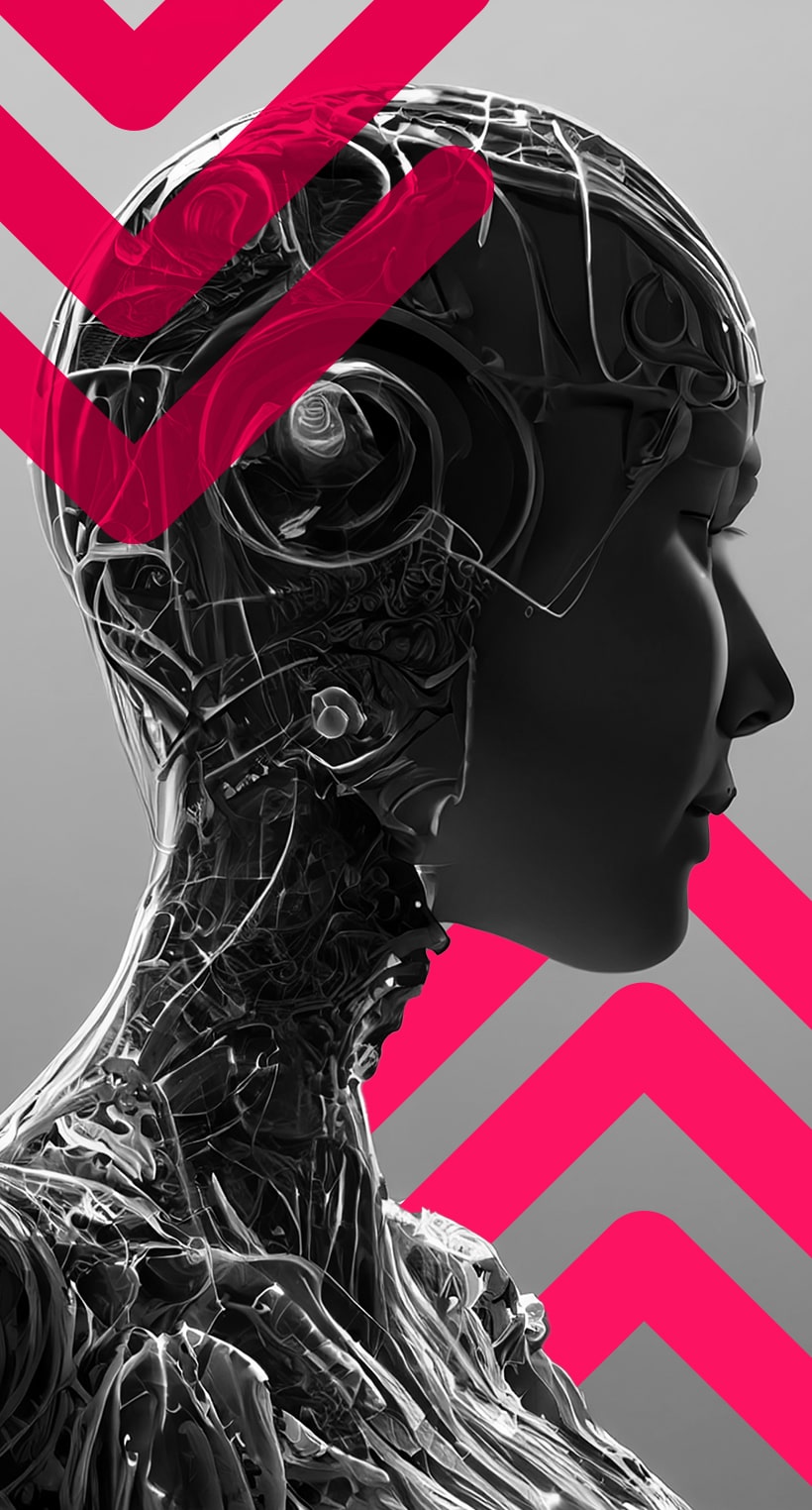As technology advances at breakneck speed, cybercriminals are becoming increasingly sophisticated in their methods, necessitating a shift in how organisations approach their security strategies. AI has stepped into this breach, offering unprecedented threat detection, analysis, and response capabilities.
The integration of AI into cybersecurity represents a leap forward in protective measures. Unlike traditional security systems that rely on predefined rules and signatures, AI-powered solutions can adapt and learn from new threats in real time. This dynamic approach allows for the identification of previously unknown attack vectors and the rapid development of countermeasures.
Moreover, the sheer volume of data that modern networks generate is beyond human capacity to analyse effectively. AI systems, however, can process and correlate vast amounts of information, identifying patterns and anomalies that would be imperceptible to even the most skilled human analysts. This capability not only enhances security but also frees up human resources to focus on higher-level strategic decisions and complex problem-solving.
Understanding the Symbiosis of AI and Cybersecurity
The relationship between AI and cybersecurity is best described as symbiotic, with each element enhancing the other’s effectiveness. AI brings its unparalleled ability to process and analyse data at scale, while cybersecurity provides the critical context and domain expertise necessary to interpret and act upon AI-generated insights.
This collaboration includes:
- Predictive Analysis: AI algorithms can forecast potential vulnerabilities and attack patterns before they materialise.
- Behavioural Analysis: By establishing baselines of normal network behaviour, AI can quickly identify and flag anomalous activities.
- Automated Response: AI-driven systems can initiate immediate countermeasures to contain threats without human intervention.
- Continuous Learning: As new threats emerge, AI systems update their knowledge base, protecting against evolving risks.
By leveraging AI, security teams can move from a reactive stance to a proactive posture, anticipating and neutralising threats before they can cause harm.
How AI is Revolutionising Threat Detection and Response
Traditional security measures often struggle to keep pace with the rapidly changing threat landscape, but AI-powered systems are changing the game. These intelligent systems can analyse network traffic, user behaviour, and system logs in real-time, identifying potential threats with a level of accuracy and speed previously unattainable.
One of the most significant advantages of AI in threat detection is its ability to recognise subtle patterns that may indicate a sophisticated attack in progress. For instance:
- Zero-Day Exploits: AI can detect anomalies that may signify a previously unknown vulnerability being exploited.
- Advanced Persistent Threats (APTs): AI can uncover stealthy, long-running attacks by analysing long-term behavioural patterns.
- Insider Threats: AI algorithms can identify unusual user activities that may indicate a compromised account or malicious insider.
In terms of response, AI-driven systems can orchestrate a coordinated defence across multiple security layers. This might include automatically isolating affected systems or initiating backup and recovery processes. The speed and precision of these automated responses can significantly reduce the potential impact of a security breach.
Furthermore, AI’s ability to learn from each incident means the security ecosystem becomes more robust over time. As AI systems encounter and neutralise new threats, they incorporate this knowledge into their decision-making processes, creating a continuously evolving defence mechanism.
The Potential Risks of Neglecting AI in Your Cybersecurity Strategy
Organisations that fail to incorporate AI into their cybersecurity strategies face a multitude of risks. The consequences of neglecting to use AI can be severe and far-reaching, potentially leaving businesses vulnerable to sophisticated cyber-attacks that traditional security measures may miss.
Some of the key risks include:
- Increased Vulnerability to Advanced Threats: Without AI’s advanced pattern recognition capabilities, organisations may struggle to detect and respond to complex, multi-vector attacks.
- Slower Incident Response Times: The sheer volume of security events can overwhelm manual analysis and response processes, leading to delayed threat mitigation.
- Higher Operational Costs: As cyber threats grow in complexity, relying solely on human analysts becomes increasingly expensive and less effective.
- Compliance Challenges: Many regulatory frameworks now require organisations to implement state-of-the-art security measures, which increasingly include AI-powered solutions.
- Reputational Damage: Organisations may face significant reputational harm in the event of a successful attack that could have been prevented by AI.
Moreover, the opportunity cost of not leveraging AI in cybersecurity can be substantial. While organisations embracing AI-driven security solutions gain a competitive edge through enhanced protection and operational efficiency, those who lag behind may struggle to catch up in an increasingly AI-dominated security landscape.
Why Embracing AI in Cybersecurity is No Longer Optional
The sophistication and frequency of cyber-attacks have reached a point where traditional security measures alone are no longer sufficient to protect an organisation’s digital assets.
There are several compelling reasons why AI has become indispensable in modern cybersecurity:
- Speed of Threat Evolution: Cybercriminals are constantly developing new attack methods. AI’s ability to learn and adapt quickly is crucial in staying ahead of these evolving threats.
- Volume of Data: The sheer amount of data generated by modern networks is beyond human capacity to analyse effectively. AI can process this data in real-time, identifying threats that would be impossible to detect manually.
- Shortage of Cybersecurity Professionals: There is a global shortage of skilled cybersecurity professionals. AI can augment human capabilities, allowing organisations to do more with limited human resources.
- Cost-Effectiveness: While the initial investment in AI-powered security solutions may be significant, the long-term cost savings in terms of prevented breaches and operational efficiency are substantial.
- Regulatory Compliance: Many industry regulations now require organisations to implement advanced security measures, which often include AI-powered solutions.
- 24/7 Vigilance: Unlike human analysts, AI systems can provide continuous monitoring and response capabilities without fatigue or lapses in attention.
Organisations that fail to incorporate AI into their cybersecurity strategies risk falling behind in their ability to protect against sophisticated cyber threats. As attackers increasingly leverage AI in their operations, defenders must do the same to maintain parity in this ongoing digital arms race.
Conclusion: Securing Your Digital Future with AI-Enhanced Cybersecurity
The benefits of AI in cybersecurity are manifold:
- Enhanced threat detection and response capabilities
- Improved efficiency and cost-effectiveness of security operations
- Greater resilience against evolving and sophisticated attack methods
- Ability to scale security measures in line with organisational growth
However, it’s important to recognise that AI is not a silver bullet. Effective cybersecurity still requires a holistic approach that combines advanced technology with skilled human expertise, robust policies, and a culture of security awareness throughout the organisation.
As we move forward, the organisations that will be best positioned to defend against cyber threats will be those that embrace AI as a core component of their security strategy. They will leverage AI not just as a tool, but as a partner in their ongoing efforts to protect their digital assets and maintain the trust of their stakeholders.
The message is clear: ignoring AI in cybersecurity is no longer an option. The future of digital protection is here, and it’s powered by artificial intelligence.
;)
;)
;)